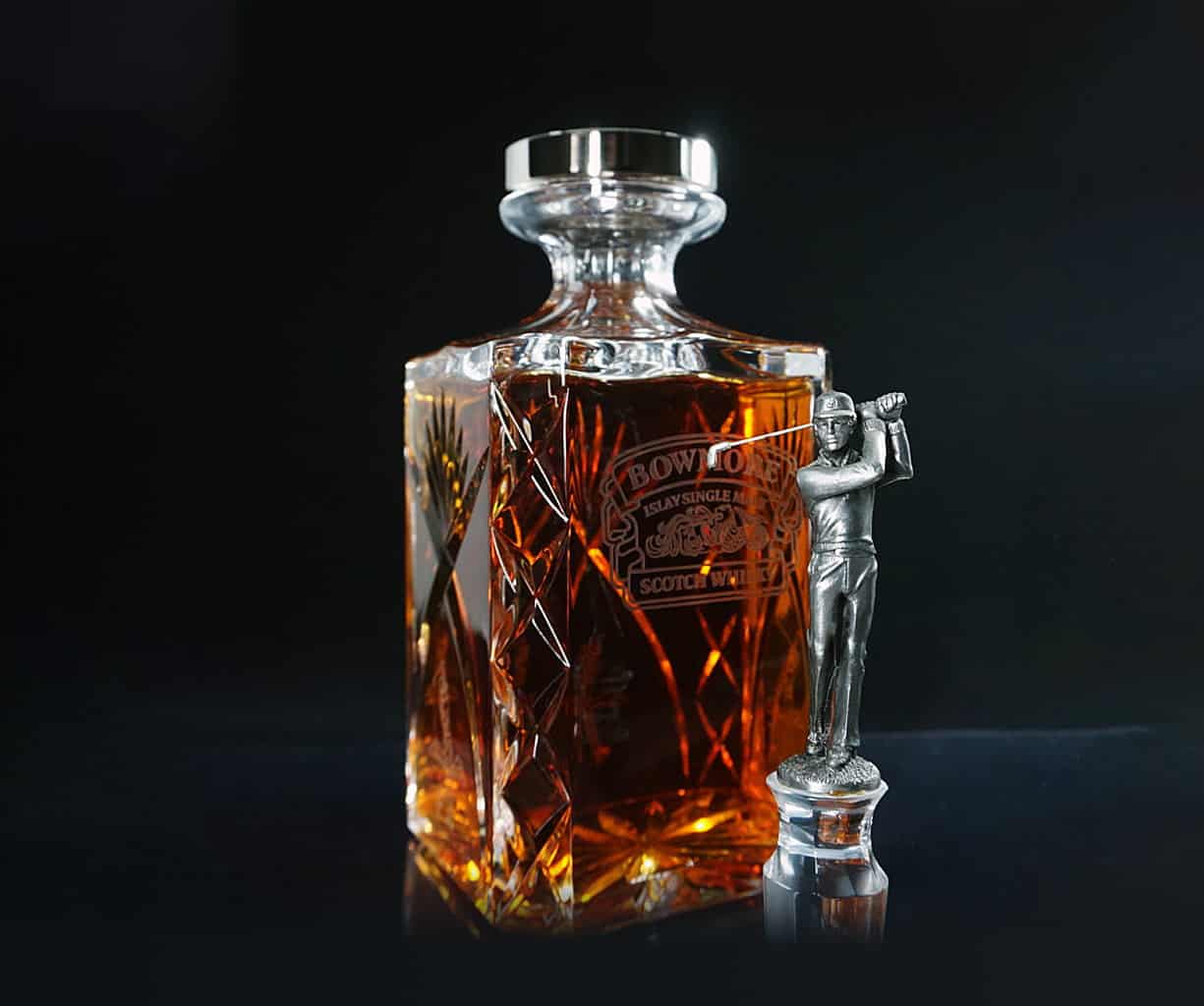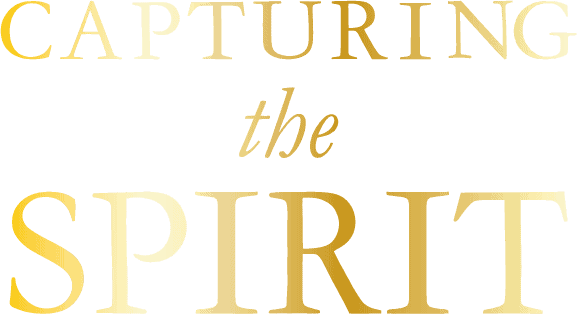To mark the 40th birthday of Glencairn Crystal we’re taking a trip down memory lane to showcase some of our most interesting and innovative decanters.
The second decanter story in our series discusses one of our very first pioneering projects – the Bowmore Golf decanter – launched in 1986. This decanter marked a revolutionary departure from the way in which traditional whisky decanters looked and were made. The project was ahead of its time and helped to set Glencairn Crystal apart from its competitors as it was such a learning curve in new ground- breaking ideas and techniques.
Glencairn Crystal Founder Raymond Davidson worked closely with Brian Crook (Director at Morrison Bowmore at the time, who later founded Vintage Malt Whisky Company) on the project. Raymond and Brian share their views below on why this decanter was so special.
To mark the 40th birthday of Glencairn Crystal we’re taking a trip down memory lane to showcase some of our most interesting and innovative decanters with Scott Davidson (Glencairn Crystal’s New Product Development Director and son of Founder Raymond Davidson).
We kick off our series of decanter stories with the ground-breaking Mortlach 70 Year Old ‘Teardrop’ decanter from 2010, which was incredibly special; when it was released the whisky was the oldest in the world to have ever been bottled and sold. We worked closely with Michael Urquhart (MD of Gordon & MacPhail in 2010) and his team on the project and Michael also shares his views below on what made this whisky and decanter so unique.
The Brief
“
BC: I’d always been keen on having a golf linked whisky product and thought there was mileage in that. So I approached Raymond with this idea because I felt we could do something more up-market than ceramic in the style of a crystal decanter.
The first idea I had was to have a round stopper like a golf ball, but we discussed it and we went off the idea. Raymond suggested we use a model of my golf swing so we got a nice picture of a golf swing and Raymond said he knew a model maker and he could get a prototype model made.
”
The Whisky
“
BC: We decided that rather than use an aged Bowmore, we would use an unaged Bowmore because we felt that people weren’t buying the whisky per se. They weren’t buying Bowmore because Bowmore wasn’t the brand it is today. They were buying the whisky decanter with a single malt in it.
It was only ever sold to duty free shoppers – the Pacific Rim duty free outlet for Japanese travellers – and they retailed it for around $300. It was ground-breaking at that price range in duty free shops. In those days, this was probably the most expensive whisky on the shelf. We did it over three years – we made them in batches of 100 and we used to sell around 300 a year.
”
The Decanter
“
RD:The final decanter had an Image on the front that was designed by Jim Drysdale, who was a huge asset to Glencairn. He worked for me for just shy of 30 years. He was the one who designed all the images of the golfers for the decanter. Another side that came from the job was that what was left was the ball stopper and we cut another angled face and converted the ball stopper into a paperweight with the Bowmore logo on it, which was a wee bonus.
”
“
BC: Raymond produced a prototype of the golf decanter which is still in my office. The prototype decanter was never used. We decided we needed to be more ‘golfy’ in terms of pictures. So, the prototype decanter is a one-off with the Bowmore logo and it has pictures of the three parts of a golf swing etched on three sides. The actual final decanter has one image etched on the front.
”
The Challenges
“
BC: We couldn’t get a suitable golf club image or model strong enough to replicate a golf club. The silver or pewter would have to be so thin, so Raymond thought why don’t we use some piano wire? We did that and ended up with the most amazing little model of a golfer we could have hoped for.
”
“
RD: This project helped Glencairn to develop as a company because it initiated thinking of how do we make this golfer as a stopper. So, we cut the peg from the bottom of a normal faceted ball stopper and it forced us to develop a special adhesive to bond the metal to the glass. We had to get everything right and the surfaces correct and then we had to develop the special adhesive and get special equipment to get the adhesive to bond the metal to the glass.
We had to focus on ensuring the stopper of the decanters were uniform – they were redeemed properly so that we didn’t have issues with different sizes of corks for sealing the whisky in the decanter. It was a great exercise that led us into developing as a company.
”
The End Result
“
RD:It was right at the beginning (of Glencairn Crystal) so it meant we were focusing on problems like that at an early part of our career and it meant when other crystal manufacturing companies started to get involved which was only recently in that aspect of decanters, we were well ahead of the game in the learning curve. We put the images of the project in our leaflets and a magazine that showcased it. That brought others to our door looking for packaging for their premium whiskies.
”
“
BC: First of all, I was surprised with the model, I thought Raymond and his model maker came up with something that was unique. There was really nothing to compare to the golfer model. I was quietly surprised that we didn’t sell more.
In many ways, this project was well ahead of its time. You hear that expression a lot, but I think with this golf decanter we actually were. If we were to have launched it 20 years later then the whole market would have changed and golf by that point would have exploded on TV and Sky etc. I feel that it would have been a duty-free sale but also a golf club prize. There would have been a whole new market for it and sadly we missed it.
”


